Introduction
Riveting is the process of joining two metal plates with the help of nuts and bolts. In other words, it is a process in which a hole is made on the steel plates to be joined, the diameter of which is more than the nominal diameter of bolt. The rivet is then inserted and the head is formed at the other end. The rivets should conform to IS: 1929-1982 and IS: 2155-1982 as appropriate. High tensile steel rivet must be manufactured from steel conforming to IS: 1149-1982.
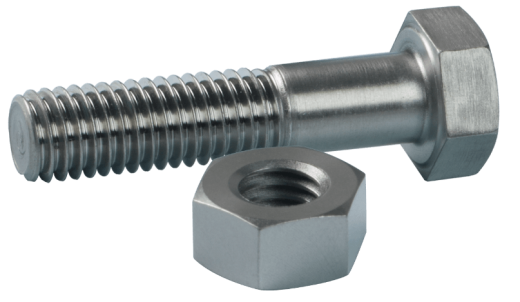
Fig 1: Screws, Rivets and Bolts
Courtesy: Plansee
Welding is the process of joining two metal plates with the help of welds. It is done with welding equipment and electrodes. Here, no extra items are required to be fit on the plates while making the connection. Some assumptions are made in welded joints-
- Welds are isotropic, homogeneous, and elastic in nature.
- Parts that are connected by the welds are rigid and their deformations are not taken into account.
- Stresses are taken into account due to external loads only.
- Shape of the weld, the effect of residual stresses, concentrations due to stress are neglected.
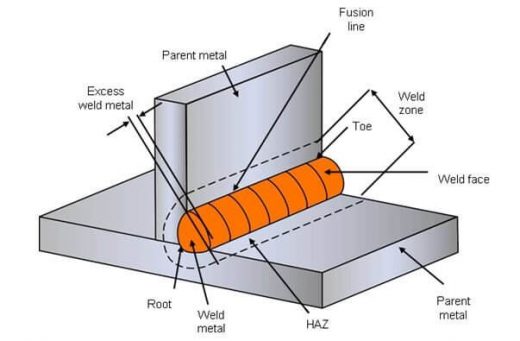
Fig 2: Parts Of Welding
Courtesy: Twi
Types Of Welding
Various types of welding are –
- MIG Welding
- Stick Welding
- TIG Welding
- Gas Welding
1. MIG Welding – The full form of MIG is Metal Inert Gas. It is the easiest form of welding. It has two different subtypes. The first one uses bare wire and then the second one uses second flux core. The bare wire welding is used to connect thin metal plates together. The flux core welding is mostly used for outdoor activities as it does not require any gas supply or flow meter.
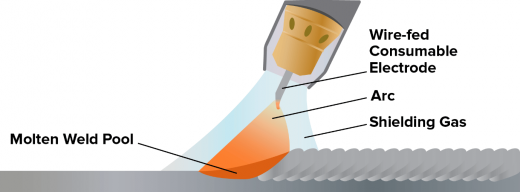
Fig 3: MIG Welding
Courtesy: Welding Supplies From Ioc
2. Stick Welding – It is the old form of welding and it is also known as Arc welding. It uses electricity to melt the rod, which in turn melts both the joint and the rod simultaneously. This leads to the fusion of the two metal plates and it also fuses the rod to the weld. Equipment used for such types of welding are – A constant voltage (CV) power supply, rod holder, ground clamp, stick welding rods.
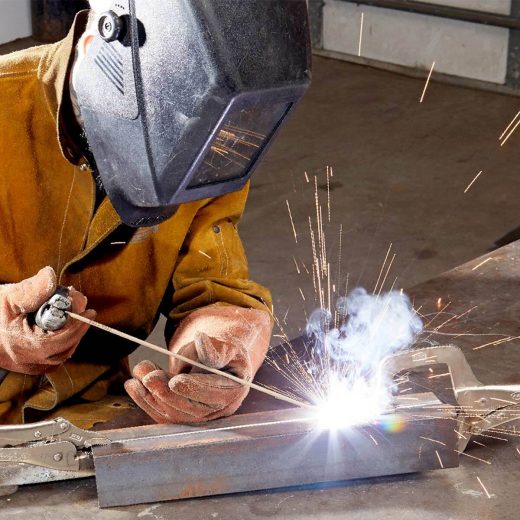
Fig 4; Man performing Stick Welding
Courtesy: The Family Handyman
TIG Welding – TIG stands for Tungsten Inert Gas. For performing this, two hands are required. One hand holds the rod while the other rod holds TIG torch. This torch produces an arc and heat that is used to melt the metal. It is mostly used for metals like aluminium, steel, cobalt, etc.
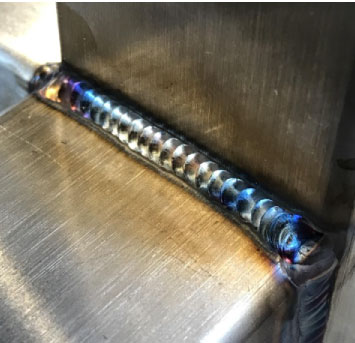
Fig 5: TIG Welding
Courtesy: Weldclass
Gas Welding – This type of welding uses gases like oxygen and acetylene. These gases are very portable to carry. Fuel gas and oxygen react with each other that in turn melts and joints the metal. It is great for brazing dissimilar metals together.
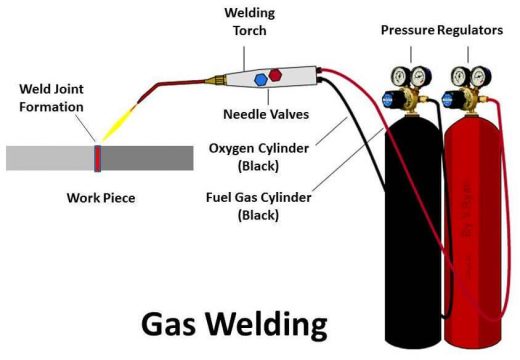
Fig 6: Gas Welding equipment
Courtesy: Mech4study
Types Of Rivet Joints
Various types of rivet joints are-
- Lap joint
- Butt joint
- Single strap butt joint
- Double strap butt joint
- Single riveted joint
- Double riveted joint
- Chain riveted joint
- Zig zag joint
1.Lap Joint – It is a type of joint in which the plates are kept in an overlapping position and then rivets are put into the intersection through the holes. The load in the lap joint has a certain eccentricity as the centre of gravity of the two members does not lie on the same line. This may lead to bending of plates. Hence, to minimise this minimum, two bolts are recommended.
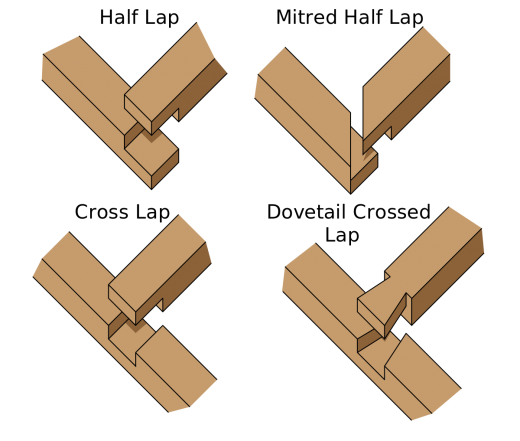
Fig 7: Lap Joint
Courtesy: Wikipedia
2. Butt joint – In this joint, the two plates are kept in alignment without their surfaces overlapping and another cover plate is kept either on both sides or on one side. Then the whole assembly is riveted to the main plate. If the cover plate is on one side, then it is called single strap butt joint and when it is placed on both sides, then it is called double strap butt joint.
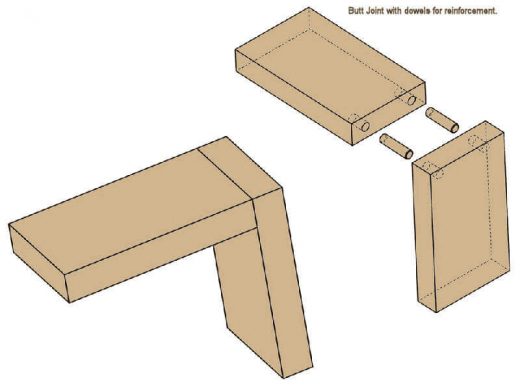
Fig 8: Butt Joint
Courtesy: Homemade Furniture
3. Single riveted joint – It is a joint when there is a single row of overlapping plate in case of lap joint or on both sides of the plates in case of butt joint.
4.Double riveted joint – It is a joint when there are double rows of overlapping plate in case of lap joint or on both sides of plates in case of butt joint.

Fig 9: Single riveted lap and butt joint
Courtesy: Mecholic
5. Chain riveted and zig-zag riveted – In the chain rivet joint, the rows are in transverse position, while in zig zag riveted joints the rows are in staggered position.
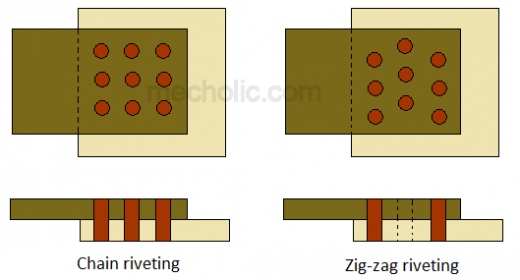
Fig 10: Chain and zig zag riveted joint
Courtesy: Mecholic
Difference Between Riveting And Welding
1.Welded joints are economical than rivet joints as in the case of welded joints, extra plates and bolts are eliminated. Labour cost is also low and the manpower required is less.
2.Load transfer during rivet joints makes the metal plates attached to it more vulnerable to bending. Hence, rivet joints are flexible that are not preferred. Whereas, the welded joints are rigid and these joints don’t bend much compared to rivet joints.
3.Tubular sections are connected economically and more strongly with welded joints.
4.Whenever repairing is to be done, the alteration expense is more in rivet joints, whereas, in welded joints, the cost is very less.
5.The process of welding is faster than riveting.
6.Noise pollution is less in welding than riveting.
7.Details of drawing in case of rivet joints are difficult to understand compared to welding.
8.A proper welded joint has an efficiency of 100% which is unachievable in rivet joints.
9.In welding, excessive heat may cause disruption in plates, while in rivet joints such a case does not arise.
10.More skill is required for welding, whereas riveting does not require any skill.
11.Inspection of the welded joint is difficult while the rivet joint can be inspected easily and, in some cases, loose connections can be repaired by tapping a hammer on it.
12.Probability of brittle fracture is more in welded joints as compared to rivet joints.
Conclusion
Welded connections are more versatile compared to rivet joints and are used widely in all engineering machines or structures. Welded connections have more advantages than rivet joints. However, the only major drawback of welded joints is its inspection. Otherwise, the welded connections are perfect and a variety of techniques are associated with it. As the steel industry is progressing, it can be estimated to use other new ideas in the welding process to make it safer and less skilled.
References
1. Protolabs, “Welding vs. Riveting: Fusing Sheet Metal Parts”- https://www.protolabs.com/resources/blog/fusing-sheet-metal-parts-welding-vs-riveting/
2. Mecholic, “What Is the Difference between Welding and Riveting?”- https://www.mecholic.com/2015/12/comparison-between-welding-and-riveting.html
3. EVS Meta, “What are the Differences Between Welded & Rivet Joints?” – https://evsmetal.com/2018/01/difference-between-welded-rivet-joint.html#
4. The Manufacturer, “Different types of welding and what they are used for”- https://www.themanufacturer.com/articles/different-types-of-welding-and-what-they-are-used-for/
5. American Torch Tip, “Why MIG Welding Is Better Than TIG Welding”- https://www.americantorchtip.com/blog/mig-vs-tig
6. Go Welding, “Stick Welding”- https://gowelding.org/welding/stick-smaw/
7. Mecholic, “Types of Riveted Joints – Lap Joint, Butt Joint, Single Strap, Double Strap, Chain and Zig-Zag Riveting”- https://www.mecholic.com/2018/10/types-of-riveted-joints.html
8. Duggal, S K., “Limit State Design of Steel Structures”, 2nd edition, Mc Graw Hill Education.
If you have a query, you can ask a question here.


